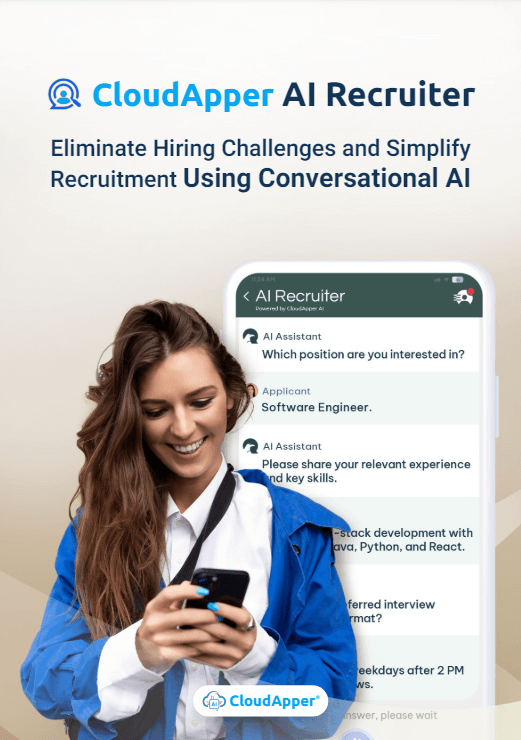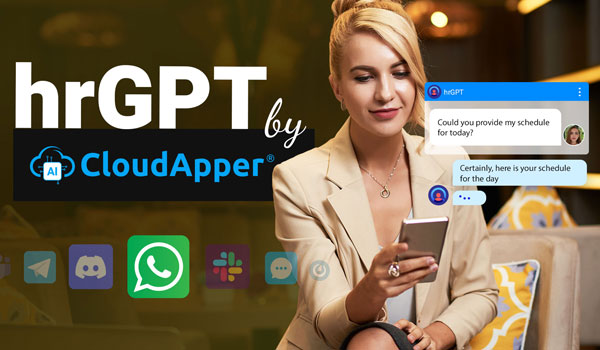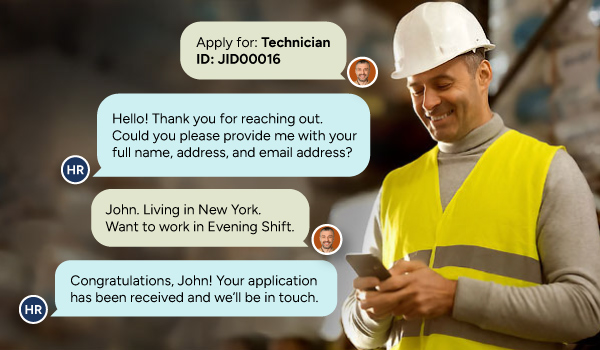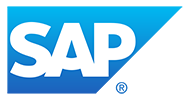Discover how to gain real-time recruiting metrics without relying on BI requests. Learn to automate workflows for essential metrics like time to hire, vacancy rates, and recruiter workload, ensuring faster access to meaningful data for better decision-making.
Table of Contents
For many HR and talent acquisition teams, data is both the solution and the struggle. You know which numbers you want: time to hire, open roles by department, vacancy rates, recruiter workload, and applicant volume per job. These are the essentials—the signals that help you prioritize, adjust, and explain. And yet, in many organizations, accessing these real-Time recruiting metrics means waiting on a custom BI request or trying to cobble together spreadsheets.
For more information on CloudApper AI Recruiter visit our page here.
You don’t need more data. You need faster access to meaningful data.
This article walks through the core recruiting metrics teams ask for every week—and how to build a workflow that surfaces them naturally, without depending on reports you have to request, chase, or build from scratch.
Why These Real-Time Recruiting Metrics Matter More Than Ever
Recruiting is increasingly a real-time game. The faster you can identify what’s working—and what’s not—the more likely you are to fill key roles without blowing your budget or timeline.
Let’s break down the most-requested metrics and explore what they tell you:
1. Time to Hire
This is the clearest indicator of process efficiency. But it’s not just about speed—it’s about insight. Where do candidates get stuck? Are screening steps too slow? Do interview delays drag out timelines?
2. Open Roles by Business Area
This gives hiring leaders visibility into which teams are growing—or falling behind. Viewing open roles by function, department, or geography helps HR prioritize effort and track workforce planning goals.
3. Vacancy Aging
An open role left unfilled for too long impacts morale, productivity, and revenue. Seeing how long roles have been open (and why) helps talent teams intervene early and reallocate focus.
4. Applicants per Role
This is a window into sourcing effectiveness. Too few applicants might signal a weak job ad or visibility issue. Too many unqualified ones might mean the job is posted too broadly—or screening is too loose.
5. Open Positions per Recruiter
This metric keeps workload balanced and surfaces gaps in capacity. It also gives leadership a clear sense of where more help—or tools—might be needed.
The Common Challenge: Great Metrics, But Trapped in the System
Here’s the reality: many companies already track this data. But accessing it often involves custom queries, static dashboards, or manual exports.
In one example posted in a UKG Community forum, a team asked how to report on time-to-hire, open roles by business area, and applicants per job. The only answer? A custom request—possibly weeks out.
That’s not sustainable when you’re trying to move quickly.
The Opportunity: Capture Metrics at the Point of Action
Instead of treating reporting as something you build after the fact, consider flipping the model: capture the right data at the right moment, as a natural part of the hiring process.
When recruiting workflows are automated—like when applications, screenings, referrals, and interview bookings are handled through a centralized system—the data doesn’t need to be “reported.” It’s already structured. It’s already there.
This doesn’t mean replacing your BI tools. It means feeding them better, cleaner, real-time data so you spend less time building reports—and more time acting on them.
A More Sustainable Way to Track What Matters
Let’s take “time to hire” as a simple example.
When your system automatically logs when a job is opened, when a candidate applies, when interviews are scheduled, and when an offer is accepted, time-to-hire becomes a live metric. There’s no need to run a report. You just open your dashboard and see how long each role has been open and where it sits in the process.
The same applies to referral volume, candidate drop-offs, or roles aging with no activity.
It’s not about replacing your analytics team. It’s about giving recruiters and hiring managers what they need in real time—without bottlenecks.
Pro Tip: Make Metrics Actionable, Not Just Informational
Real-Time Recruiting Metrics are most powerful when they lead to better decisions.
- If a role is aging, alert the recruiter.
- If a business unit consistently opens more roles than others, automate a weekly pulse to HR leadership.
- If a recruiter is overloaded, flag it before it affects candidate experience.
You don’t need dozens of charts. You need a few well-placed insights tied directly to action.
Final Thought: What Gets Measured Should Be Available
Hiring teams want to make better decisions. They know the metrics they need. But unless that data is accessible and easy to understand, it becomes a blocker, not a benefit.
Automation helps—but only if it’s designed to capture what matters at the moment it happens.
If you’re constantly asking for basic hiring data—or spending hours trying to find it—you don’t need more dashboards. You need better workflow design.
Learn more about how to track recruiting metrics that matter—without chasing reports. Contact us today.
What is CloudApper AI Platform?
CloudApper AI is an advanced platform that enables organizations to integrate AI into their existing enterprise systems effortlessly, without the need for technical expertise, costly development, or upgrading the underlying infrastructure. By transforming legacy systems into AI-capable solutions, CloudApper allows companies to harness the power of Generative AI quickly and efficiently. This approach has been successfully implemented with leading systems like UKG, Workday, Oracle, Paradox, Amazon AWS Bedrock and can be applied across various industries, helping businesses enhance productivity, automate processes, and gain deeper insights without the usual complexities. With CloudApper AI, you can start experiencing the transformative benefits of AI today. Learn More

CloudApper AI Solutions for HR



- Works with








- and more.
Similar Posts

How to Prequalify Candidates with AI—Without Slowing Down Hiring

How to Reduce Recruitment Costs: A Step-by-Step Guide



